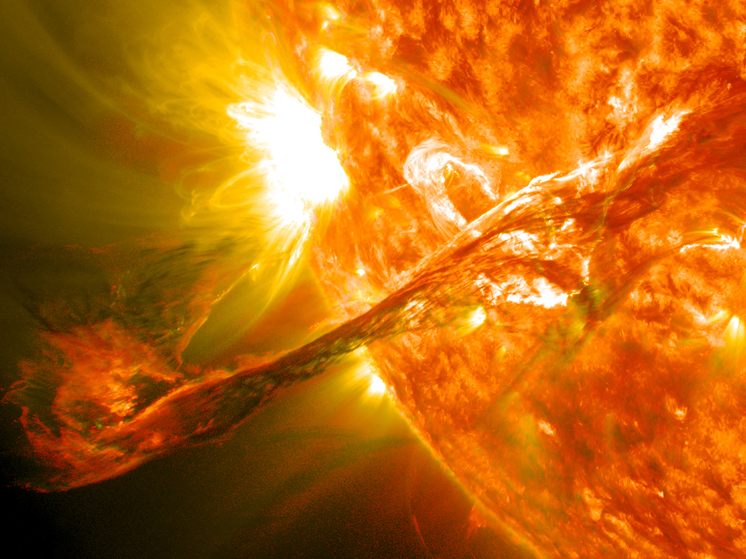Prominence Emission Will Beat Solar "Fan": IZMIRAN Comments on Impressive Event

"Spinning tornado" neutralizes solar "hair dryer": IZMIRAN told how hard the coronal mass ejection will hit the Earth
The solar prominence, a cloud of plasma 1 million kilometers long, which burst out from the surface of the star on Monday, July 7, may cause a magnetic storm on Earth, but not a super-strong one. The Center for Space Weather Forecasts of the Institute of Terrestrial Magnetism and Radio Wave Propagation of the Russian Academy of Sciences (IZMIRAN) told MK what could prevent this coronal mass ejection.

test banner under the title image
According to the Solar Astronomy Laboratory of the IKI RAS, on July 7, between 3 and 7 a.m. Moscow time, a large coronal mass ejection occurred on the Sun. A huge plasma loop about 1 million kilometers long, resembling a huge spinning tornado, "shot" exactly north relative to the solar disk facing our planet. It is possible that most of the prominence could have reached Earth.
The impression was also enhanced by the fact that the emission spun up as it rose, creating vortex movements.
Since the prominence burst out on the visible side of the Sun, almost opposite our planet, everyone hastened to associate it with the possibility of a powerful magnetic storm. However, the IZMIRAN Space Weather Forecast Center calmed us down a little. It turns out that the powerful emission was preceded by another solar event - the wind blowing from the solar coronal hole, which can interrupt the consequences of that very long plasma loop.
- Yes, the ejection of a large filament was really very impressive, - says the head of the Center Maria Abunina. - But, firstly, it is quite slow (only 350-400 km per second), that is, several times less than the most powerful of the known coronal ejections, accelerating to 3000 km per second. Secondly, the solar wind from the coronal hole began to affect the Earth much earlier.
Coronal holes, when we look at the Sun, look like dark spots. High-speed wind blows from them, its speed exceeds the background. This is a long-lived formation: the wind blows as long as the coronal hole exists, that is, for several months. There was even a case when it did not close for a year! It can be compared to a working hair dryer, with which someone rotates around its axis. And it constantly blows on the Earth as soon as it gets into this flow.
A coronal hole flow and a coronal mass ejection are the same plasma, the only difference between them is in density, speed, mass and time of impact on our planet. Ejections can produce stronger disturbances of the geomagnetic environment, but flows from a coronal hole blow longer. For example, the ejection that occurred on Monday will end within 1-2 days, and the flow from the hole that we registered will blow for 3-4 days. Therefore, it may not let a piece of that impressive prominence to us.
mk.ru






